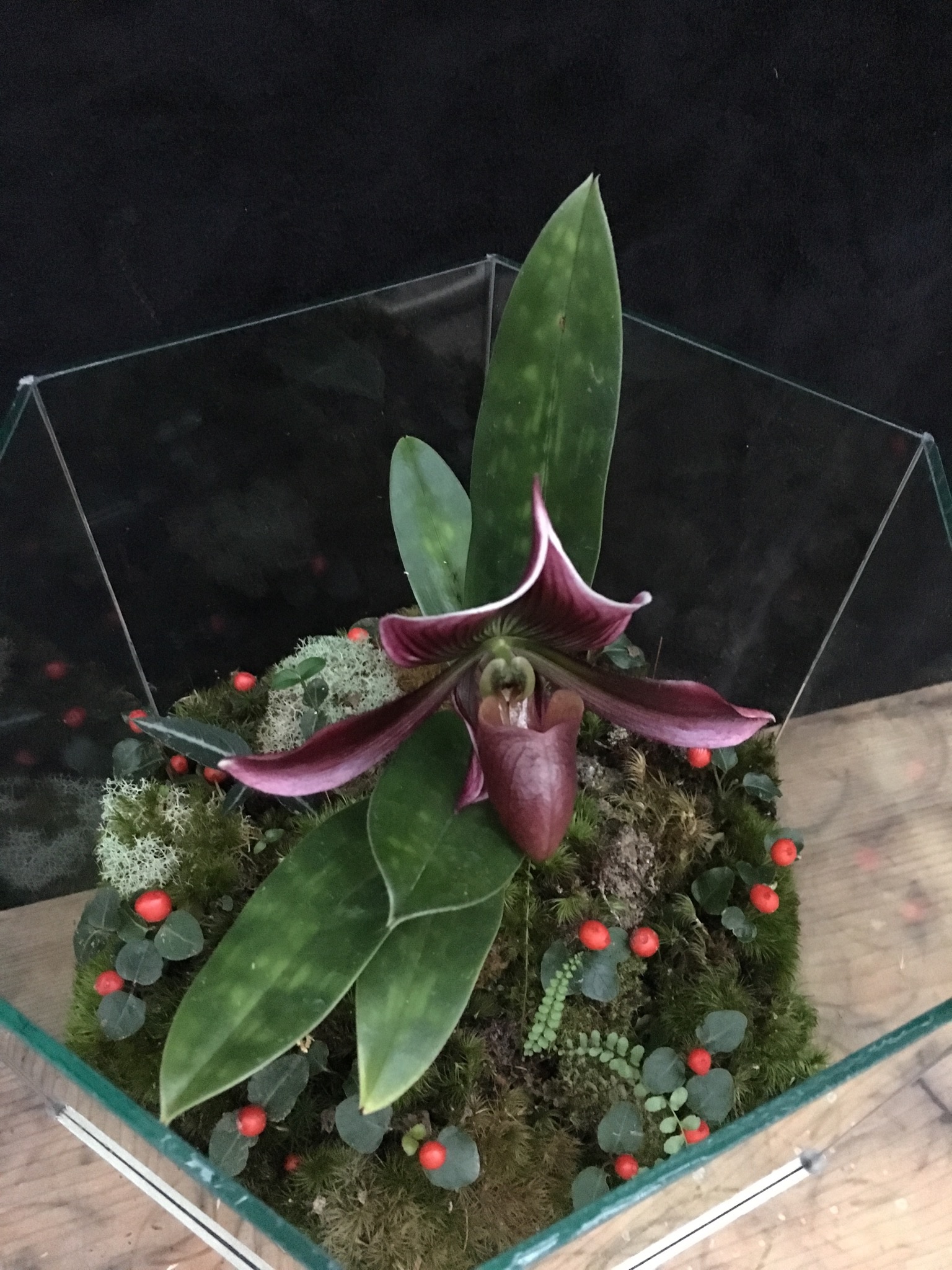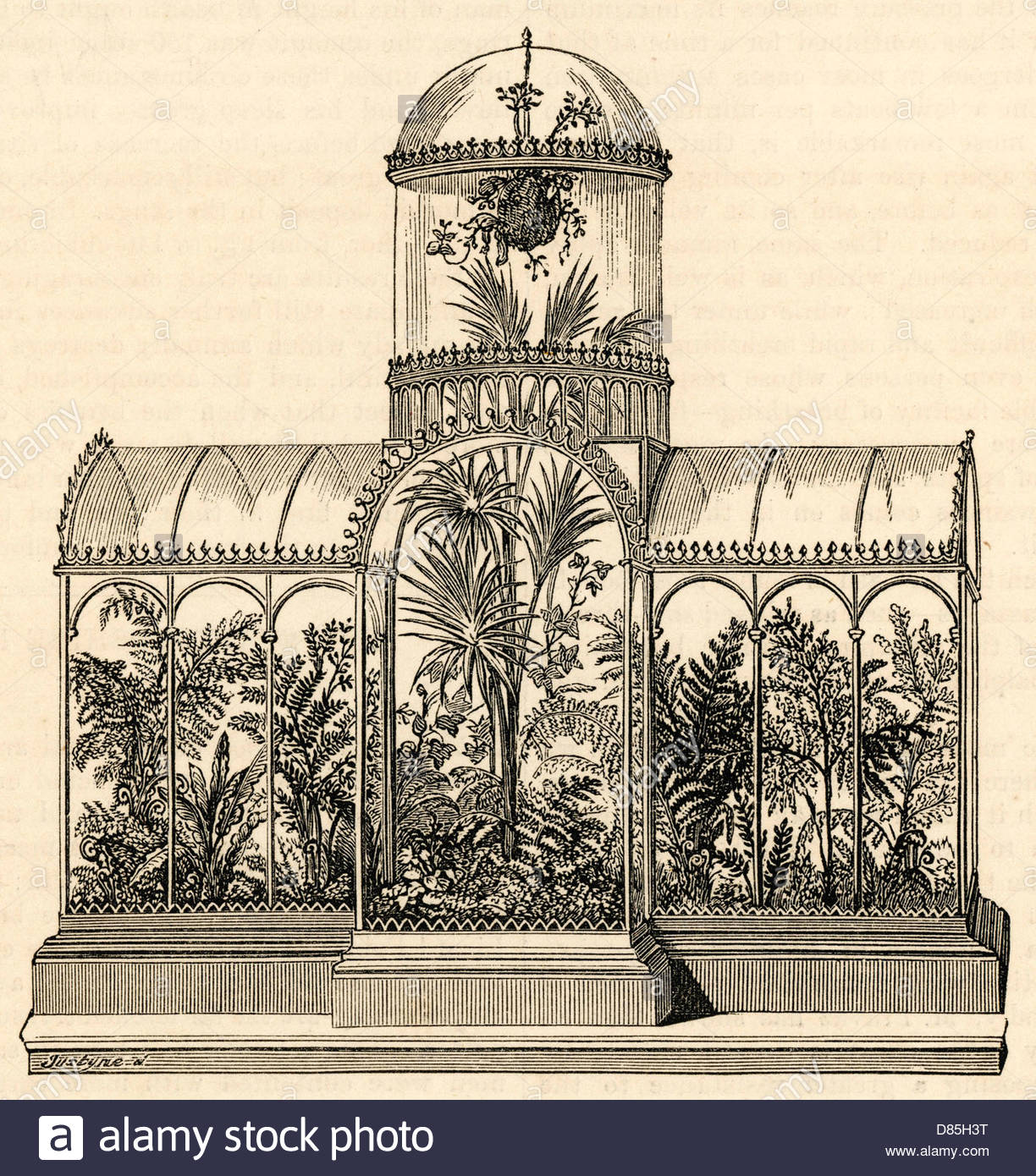
“This terrarium contains a petite yellow Oncidium and a multi-floral Phalaenopsis, a small ivy, a thick bed of living moss, and several sprigs of curly willow. The base uses a layer of river rock, sphagnum moss, and potting soil to help hydrate the greenery.” Photo Credit – Arthur Chadwick
Dr. Nathanial Ward was a collector, amassing thousands of plants in his personal herbarium as well as countless insects in glass jars. In one tightly sealed bottle of moth cocoons, a tiny fern sprouted and, over the next few years, grew quite large. Ward observed that the moisture inside the vessel evaporated and condensed on the glass during the day only to run down the sides and feed the roots at night. A self-sustaining microenvironment had been created.
Ward proceeded to have two larger containers built, using glass and wood, which he filled with ferns and grasses for shipment to Australia. After months at sea, the plants arrived healthier than when they left. A return trip of Down Under species was equally successful. Ward published his findings in a book, “On the Growth of Plants in Closely Glazed Cases” and the word was out.
The new Wardian case, which bore his name, revolutionized commercial shipping of tender plantlets. Soon, Brazilian rubber tree seedlings were being sent to Sri Lanka, Chinese banana shoots to Fiji, and South American cinchona (quinine) to Asia. For the next century, millions of plants traversed the oceans safely.
In chic parlors of the wealthy, the Wardian case had another use. This version was ornate and designed to fit on a table top. Exotic fern collections were the first to use the case and the craze soon spread to orchids.
Today, we are seeing a rebirth of the Wardian Case but in a slightly different form. Orchids are now widely grown in the home and hobbyists are looking for ways to give their plants the best possible treatment. Winter is particularly challenging for epiphytes as modern HVAC systems dry out the air causing buds to shrivel and leaves to turn yellow.
Enter the orchid terrarium - a glass container that is open at the top to allow for air movement and, perhaps, a flower to stick out. Almost any shaped vessel will do. It just needs to be large enough to reach inside.
Miniature Phalaenopsis are popular with terrariums because these orchids prefer low light and the blossoms last for months. Another genus with similar care is Paphiopedilums or lady slippers which have a single pouchy bloom and decorative foliage. If the flower stem is taller than the container, just let it protrude. The petals will continue to receive humidity from inside.
There are many ways to assemble an orchid terrarium.
-
Most start by placing a blooming potted orchid plant on the bottom of the container. If there is ample room, add another orchid plant or a compact evergreen like ivy or fern.
-
Add three layers of filler around the pots starting with an inch of pea-sized river rocks for drainage. Then add a quarter inch barrier of damp sphagnum moss followed by an inch of potting soil for hydration.
-
Add a bed of fresh green moss and attach some mossy sprigs to the flower stems.
-
Finish it off with a few pieces of curly willow or other whimsical props.
Orchid Terrarium Care
Plants inside an orchid terrarium need much less water than normal since the container tends to hold moisture. Periodically, a heavy squirt from a hand sprayer should be sufficient.
Eventually, every orchid will lose its flowers but not to worry. Just remove the tired plant and add a fresh one. With modest effort, the magical world first discovered in Dr Ward’s cocoon jar, will provide years of joy.

“This terrarium contains a vini-color lady slipper as well as a wide variety of mosses. The red Partridge Berry plants were gathered in the woods.” Photo Credit – Arthur Chadwick

“The Wardian Case was popular in the 1800’s in England as wealthy Victorians displayed their fern and orchid collections. Physician Dr. Ward is credited with inventing the plant container following an unlikely discovery.” Courtesy of Chronicle/Alamy
